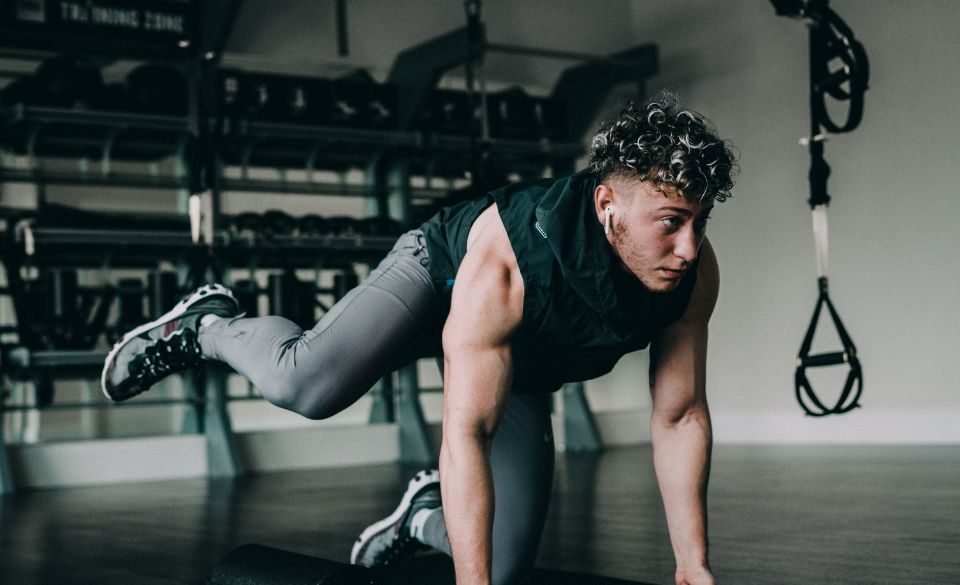
Why does exercise affect blood pressure?
Page Contents
- What Is Blood Pressure?
- How to Measure Blood Pressure
- What Constitutes a Healthy Blood Pressure Reading?
- How to Lower Blood Pressure
- Exercise Strengthens the Heart
- Exercise Promotes Weight Loss
- What Type of Exercise Is Ideal for Lowering Blood Pressure?
- How Much Exercise Is Necessary to Lower Blood Pressure?
- Frequently Asked Questions (FAQ)
- Final Words – Why does exercise affect blood pressure?
Physical activity undoubtedly offers numerous benefits to your overall health, encompassing advantages for your cardiovascular system, metabolism, and mental well-being. Among these benefits, exercise’s remarkable ability to reduce blood pressure stands out, and maintaining healthy blood pressure levels is crucial for longevity.
Higher blood pressure levels are directly associated with an elevated risk of various diseases, illnesses, and even mortality. Unlike more visible indicators such as body fat, high blood pressure often remains unnoticed. This silent and dangerous aspect of it has led the American Heart Association to dub it the “silent killer.”
According to the US Department of Health and Human Services, one out of every three US adults grapples with high blood pressure. Fortunately, there are effective non-medication methods to lower blood pressure. You can counteract high blood pressure by incorporating regular exercise into your routine and making certain lifestyle changes to increase physical activity. Here’s the essential information you need to understand.
What Is Blood Pressure?
Blood pressure refers to the force exerted by your blood against the walls of your arteries. This force is generated by your heart’s contraction, which pushes blood into your arteries, distributing it throughout your body to supply vital organs and muscles.
How to Measure Blood Pressure
A healthcare professional can measure your blood pressure using an inflatable cuff wrapped around your arm. The cuff tightens, briefly interrupting blood flow through the brachial artery. Gradually, it releases pressure, allowing blood to flow back into the area. The device detects arterial wall vibrations to determine your blood pressure, indicating whether it falls within the high or low range.
Manual Assessment
If you lack access to regular medical check-ups, you can get a rough estimate of your blood pressure levels at home. Although this at-home method is not as accurate as professional monitoring, it can serve as a useful gauge.
1. Place your two index fingers on the inside of your opposite wrist.
2. Locate your pulse just below the wrist creases, closer to your thumb.
3. Set a timer for 10 seconds and count the number of pulses you feel.
4. Multiply this count by six to determine your heart rate per minute.
A heightened heart rate, assuming you are at rest, is associated with high blood pressure.
What Constitutes a Healthy Blood Pressure Reading?
Blood pressure readings consist of two values: systolic and diastolic. Systole and diastole represent the two phases of the cardiac cycle. Systolic blood pressure occurs when the heart contracts to pump blood out, resulting in a higher reading. Diastolic blood pressure, on the other hand, is measured between heartbeats.
Normal Blood Pressure:
Systolic: Less than 120, Diastolic: Less than 80
Elevated Blood Pressure:
Systolic: 120–129, Diastolic: Greater than 80
High Blood Pressure (Hypertension):
Systolic: 130–139, Diastolic: Greater than 90
Why Is Blood Pressure Significant?
Maintaining normal blood flow ensures that your body receives the necessary blood and oxygen at the right times. Hypertension forces the heart to work harder, potentially weakening and damaging both the heart and blood vessels over time. Ideally, your heart should function efficiently without excessive strain, reflecting good overall heart health.
How to Lower Blood Pressure
Exercise is an effective method for reducing hypertension without relying on medication. Even if you are already taking medication for hypertension, incorporating exercise can enhance its benefits. For those not on medication who aim to maintain healthy blood pressure or reverse hypertension naturally, exercise is a valuable approach. Physical activity contributes to blood pressure reduction through various mechanisms:
Exercise Strengthens the Heart
When you engage in exercise, your heart also experiences a workout. The heightened demand for oxygen and nutrients required by your working muscles compels the heart to function more vigorously. Over time, this results in a stronger and more efficient heart, reducing the strain on your arteries and lowering blood pressure.
A study published in the American Heart Association Journal, Hypertension, reported that individuals with hypertension who engaged in 30 to 45 minutes of daily aerobic exercise experienced reductions in blood pressure and increased maximal oxygen uptake, two crucial indicators of a healthy heart.
Exercise Promotes Weight Loss
Being overweight or obese is closely linked to an increased risk of hypertension. As your weight rises, your blood pressure tends to follow suit. This correlation stems from the added workload placed on the heart due to excess weight.
Exercise increases energy expenditure, aiding in the creation of a calorie deficit. When you burn more calories than you consume, your body utilizes energy stores (fat) to meet its needs, resulting in a decrease in total body weight.
A study in the Medicine & Science in Sports & Exercise journal in 2001 examined the effects of exercise and weight loss on blood pressure. Among a group of 112 participants with hypertension, exercise and weight loss significantly reduced blood pressure readings. This finding was supported by more recent research involving participants with normal blood pressure, as evidenced by a 2013 trial demonstrating exercise’s favorable impact on blood pressure regardless of the starting point.
What Type of Exercise Is Ideal for Lowering Blood Pressure?
To effectively lower blood pressure, opt for heart-healthy cardiovascular exercise. Cardio or aerobic exercise includes any activity that raises your heart rate to approximately 80% of your maximum heart rate (HRmax). Beyond this threshold, activities become anaerobic, emphasizing muscle strength and endurance, which can overexert your heart. If you have prehypertension or hypertension, it’s advisable to avoid anaerobic exercises and focus on options such as:
– Walking
– Cycling
– Hiking
– Swimming
– Jogging
– Dancing
How Much Exercise Is Necessary to Lower Blood Pressure?
According to the American College of Cardiology’s current guidelines, adults should engage in 150 to 300 minutes of moderate-intensity aerobic exercise weekly or 75 to 150 minutes of vigorous-intensity exercise per week. However, any increase in physical activity is beneficial. Ideally, combining aerobic workouts with weight training can yield optimal results for reducing blood pressure by increasing muscle mass and reducing body fat.
Frequently Asked Questions (FAQ)
How long does it take for exercise to lower blood pressure?
The time it takes for exercise to have a noticeable impact on lowering blood pressure can vary from person to person. Some individuals may experience a reduction in blood pressure after just a few weeks of regular exercise, while others may take several months to see significant changes. Consistency and adherence to an exercise routine are key factors in achieving and maintaining lowered blood pressure levels.
How much does blood pressure decrease with exercise?
The extent to which blood pressure decreases with exercise also varies among individuals. Generally, regular exercise can lead to a reduction in both systolic and diastolic blood pressure. On average, engaging in aerobic or cardiovascular exercise may lower blood pressure by around 5-10 mm Hg for systolic blood pressure and 3-7 mm Hg for diastolic blood pressure. However, the actual reduction can be influenced by factors such as the type and intensity of exercise, individual fitness levels, genetics, and the duration and consistency of the exercise regimen.
Why does my blood pressure drop when I exercise?
Blood pressure tends to drop during and after exercise for several reasons:
a. Improved Cardiovascular Function: Exercise strengthens the heart, making it more efficient at pumping blood. As your heart becomes more robust, it doesn’t have to work as hard, reducing the force it exerts on your arteries.
b. Vasodilation: During exercise, blood vessels dilate (widen), allowing for increased blood flow and lower resistance in the arteries, which leads to reduced blood pressure.
c. Reduced Stress Hormones: Exercise can help decrease the levels of stress hormones like adrenaline and cortisol, which can contribute to elevated blood pressure.
d. Weight Loss: If exercise leads to weight loss, it can alleviate the extra strain on the heart caused by excess body weight, resulting in lower blood pressure.
What exercise relieves blood pressure?
Various forms of aerobic or cardiovascular exercise can be effective in relieving high blood pressure. These exercises increase your heart rate and engage large muscle groups, contributing to improved cardiovascular health and blood pressure regulation. Some exercises that can help relieve high blood pressure include:
Walking: A low-impact and accessible exercise that can be done almost anywhere.
Cycling: Whether on a stationary bike or riding outdoors, cycling is an excellent cardiovascular activity.
Swimming: Swimming and water aerobics are gentle on the joints and offer a full-body workout.
Hiking: Engaging with nature while hiking provides both physical and mental health benefits.
Jogging: A more intense form of aerobic exercise that can be beneficial for those with a certain level of fitness.
Dancing: Fun and social, dancing can be an enjoyable way to get your heart rate up.
It’s essential to choose exercises that you enjoy and can incorporate into your daily routine, as consistency is a key factor in managing and relieving high blood pressure through exercise. Always consult with your healthcare provider before starting a new exercise program, especially if you have preexisting medical conditions or are taking medication for high blood pressure.
Final Words – Why does exercise affect blood pressure?
In conclusion, exercise has a significant impact on blood pressure by strengthening the heart, promoting weight loss, and enhancing cardiovascular function. The ability of exercise to lower blood pressure is crucial, as high blood pressure is often asymptomatic but associated with various health risks. Engaging in regular aerobic exercise, such as walking, cycling, swimming, and jogging, can help reduce both systolic and diastolic blood pressure levels. The timeframe for observing results varies among individuals, emphasizing the importance of consistency in your exercise routine. The exact reduction in blood pressure also depends on several factors, but on average, it can lower systolic and diastolic pressure by around 5-10 mm Hg and 3-7 mm Hg, respectively. Exercise leads to a drop in blood pressure by improving cardiovascular function, promoting vasodilation, reducing stress hormones, and aiding in weight loss. Therefore, exercise is a valuable and natural method to relieve high blood pressure and improve overall cardiovascular health. Always consult with your healthcare provider before starting a new exercise program, especially if you have underlying medical conditions or take medication for hypertension.



